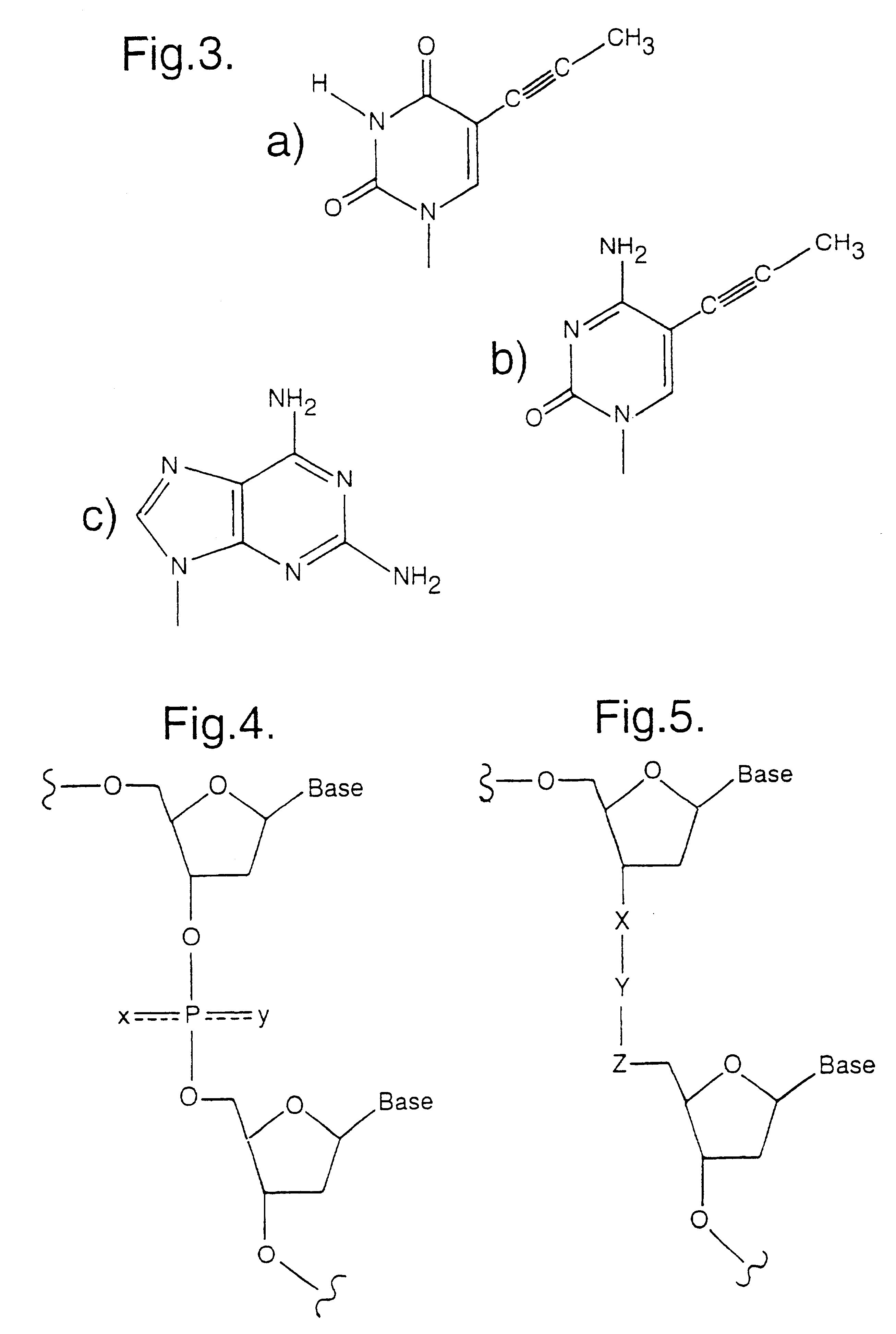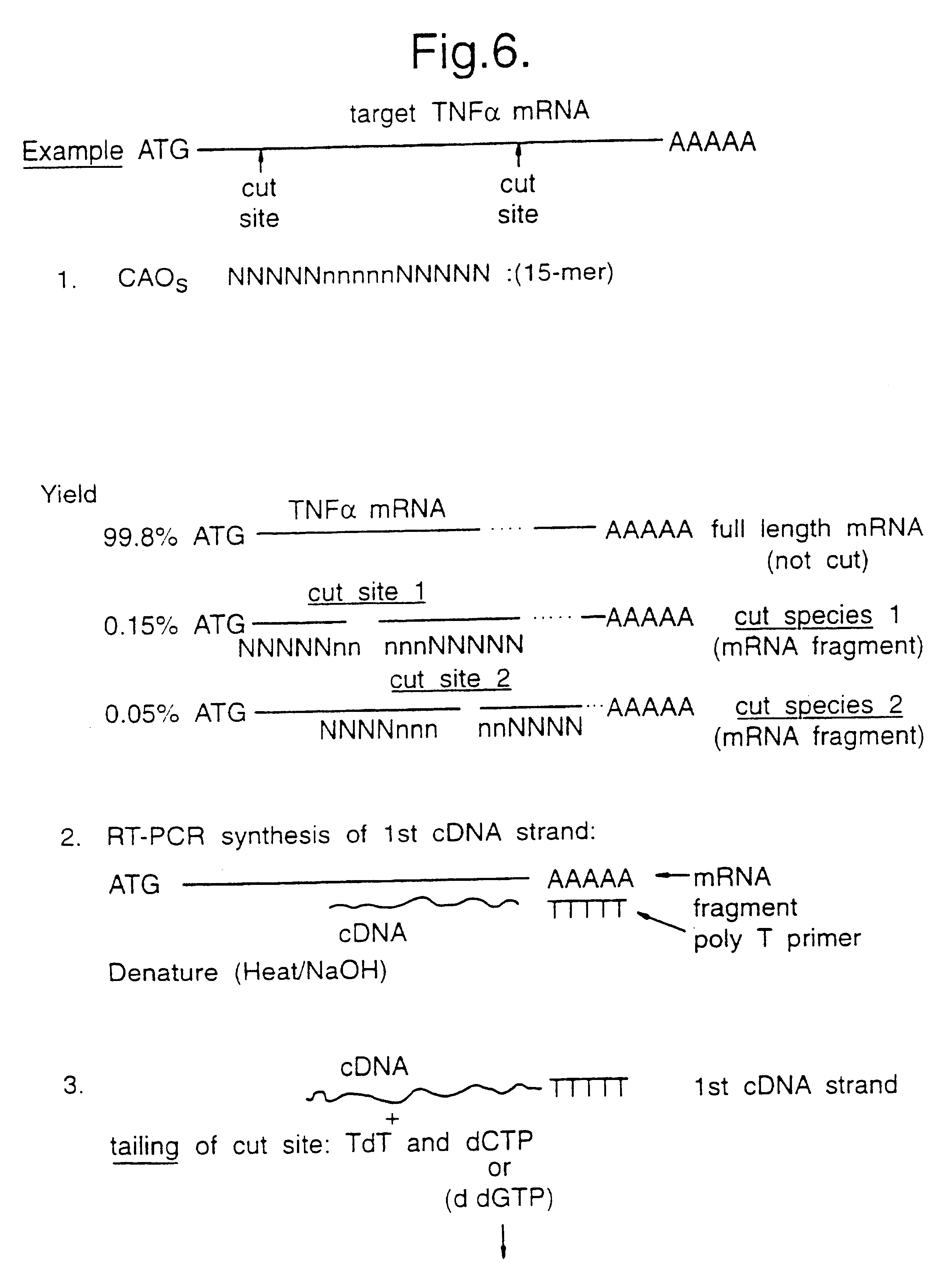Identifying antisense oligonucleotide binding
a technology of antisense oligonucleotide and binding ligand, which is applied in the field of identifying antisense oligonucleotide binding, can solve the problems of not being the most accessible, adding to the labour involved in the selection of odns with active antisense properties, and -hybridisation is also difficult to assess
- Summary
- Abstract
- Description
- Claims
- Application Information
AI Technical Summary
Problems solved by technology
Method used
Image
Examples
Embodiment Construction
Hybridisation of 4-mer Oligonucleotides to 2 TNF.alpha. cDNA Subfragments
Subcloning of the TNF.alpha. cDNA Clone
Clone number 53007 (pAW731), containing the full length cDNA sequence for TNFa in the vector pFC54.t, was bought from the American Type Culture Collection (ATCC), Rockville, Md., USA. The freeze dried bacteria were resuspended in 2 ml of LB broth and 100 ul was spread onto LB agar plate containing 100 ug / ml of ampicillin. The plates were then incubated at 30.degree. C. overnight. A single colony from the plate was then used to inoculate 100 ml of LB broth containing 100 ug / ml of ampicillin and this was incubated at 30.degree. C., shaking at 225 rpm overnight. Following this the bacterial culture was pelleted by spinning the solution at 5300 rpm in a Hereaus 17RS centrifuge for 15 minutes. The plasmid was then extracted using the Qiaprep Midi Plasmid Purification Kit (Qiagen Ltd.) according to the manufacturers instructions. 2 ul of plasmid was then digested with 10 units o...
PUM
| Property | Measurement | Unit |
|---|---|---|
| length | aaaaa | aaaaa |
| fluorescent | aaaaa | aaaaa |
| mass | aaaaa | aaaaa |
Abstract
Description
Claims
Application Information
 Login to View More
Login to View More - R&D
- Intellectual Property
- Life Sciences
- Materials
- Tech Scout
- Unparalleled Data Quality
- Higher Quality Content
- 60% Fewer Hallucinations
Browse by: Latest US Patents, China's latest patents, Technical Efficacy Thesaurus, Application Domain, Technology Topic, Popular Technical Reports.
© 2025 PatSnap. All rights reserved.Legal|Privacy policy|Modern Slavery Act Transparency Statement|Sitemap|About US| Contact US: help@patsnap.com



